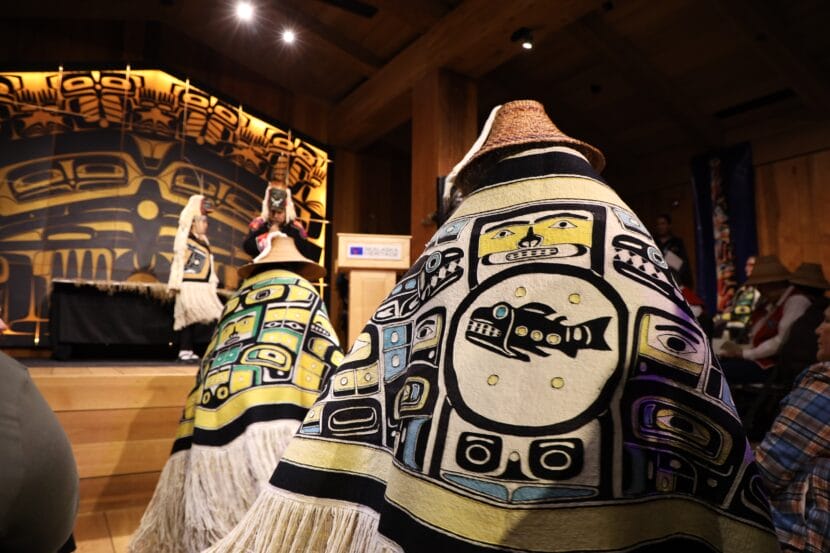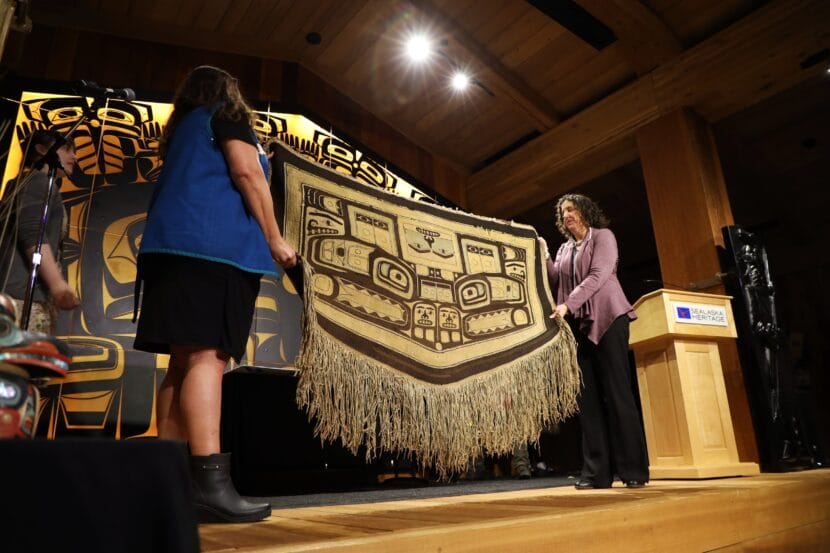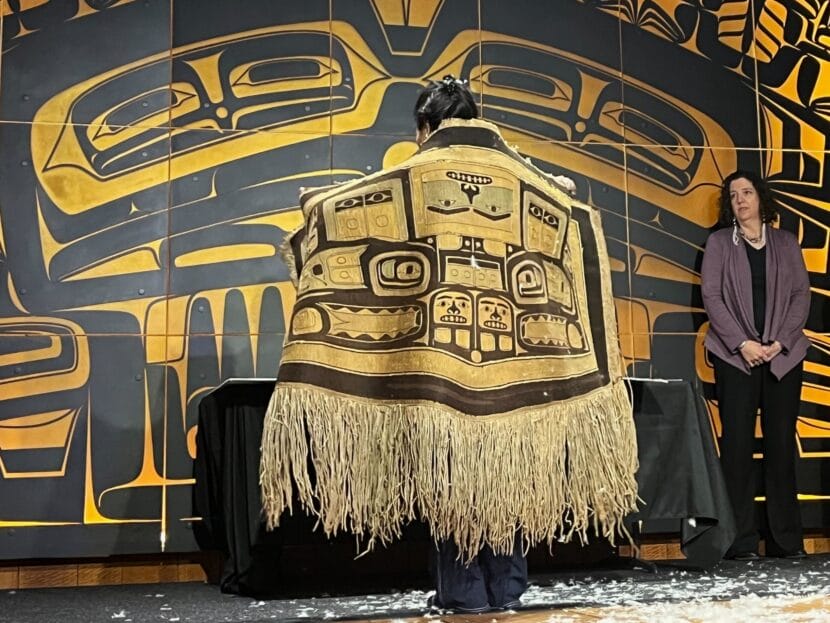Southeast Alaska Native leaders and Chilkat weavers welcomed home a very old Chilkat robe on Friday.
A group of donors bought the robe at a Seattle auction and, through the Burke Museum in Washington state, gave it to Sealaska Heritage Institute so weavers could study it.
Weavers and elders danced into the Shuká Hít clan house at Sealaska Heritage Institute in Juneau, pausing to greet the robe lying on a table at the front of the room. They sang to welcome it back to Lingít Áaní.
Later, dancers performed a pair of spirit dances to, as the program says, “breathe life into the robe and welcome the ancestors home.”
Weaver Shgendootaan Shgen George wore a shakee.át, a wooden headdress with a formline face carved on it. She knelt for a bit behind the robe, seemingly overcome, before getting up to dance.
“Honestly when I got behind it with the shakee.át on my head and I knelt down, I just started crying,” she said. “I don’t know how to explain it, just other than it was really moving and unbelievable that Iʼm right there with this amazing piece that has survived for so long and come home.”
The robe is more than 150 years old. It’s woven in bold black lines with blue and yellow details and killer whales facing out from the middle. This is the first time the robe has been used in a ceremony for at least 60 years.
George has traveled to museums to study old Chilkat robes. She said she’s never seen one of this design, and it has more to tell weavers about the robeʼs history.
Weaving instructor Wooshkindein Da.áat Lily Hope was eager to learn from it.
“Thank you to SHI for being a good place to take care of our things to take care of our ancestors so we can flip them over and look at the backside,” Hope said during the ceremony.

Hope has taught dozens of Southeast Alaska weavers. Together, they’ve doubled the number of robes that have been woven in recent years in the region. But many historic robes are still in private collections or in museums outside Alaska.
“We have been weaving Chilkat dancing robes long before these institutions existed and we will weave them long after we bring our ancestral work home,” she said.
Lingít language Professor X̱’unei Lance Twitchell said that weaving, like language, belongs in the future of Lingít peoples, too, not just the past.
“Our culture is forever, our way of life is forever. We see the footprints of our ancestors extending as a trail right in front of us. We intend to follow that trail,” he said. “The ways and the wisdom and the strength of our ancestors is woven into the things we wear. These things that become at.oo.”
At.oo are sacred, living objects.

SHI President Ḵaaháni Rosita Worl said the Lingít word for art — at nané — means that an iconic event was visualized on an object.
“But then when we brought it through our ceremonies, it then became at.oo,” Worl said. “The sacred art that has sustained us for thousands of years.”
Kus.een Jackie Pata is Jilḵáat Ḵwáan — the first Lingít people to learn to weave the robes. She said the robes tell clan histories.
“It tells the story of our lineage, it tells the story of part of our migration, and the story of our fishing grounds,” she said. “So these robes that we wear are not just robes because we wear them for ceremony, but they carry within us.”
Haida weaver Ilskyaalas Delores Churchhill said she imagines the weaver behind the robe — what she experienced in her life in the year or more it took to weave this robe — and the knowledge she is now passing down to future weavers.
“Our ancestors are going to be teaching us, because she learned from the ancestors, and now sheʼs going to teach us,” Churchill said.
For the exit dance, prolific Chilkat weaver Sainteen Anna Brown Ehlers wore the robe, carefully standing in one place, as Southeast Alaska Native leaders and weavers danced around the room and out the door.






